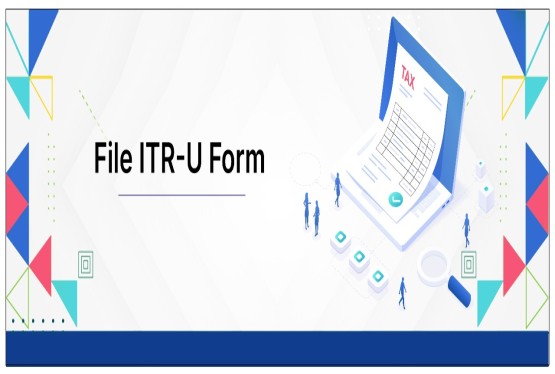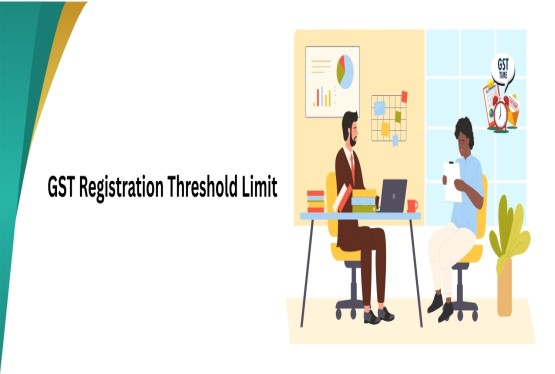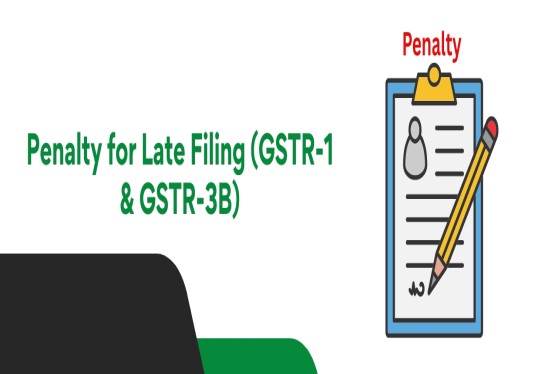Timely filing of GST returns is a legal requirement under the Goods and Services Tax (GST) law in India. If a registered taxpayer fails to file the required returns within the due date, the government imposes a penalty, commonly referred to as a "late fee" along with applicable interest. This guide provides a complete and detailed explanation of how GST penalty is calculated, how it can be paid, and what legal consequences a taxpayer may face in case of non-payment.
GST Late Fees and Penalties
Late fees under GST are monetary charges that taxpayers have to pay if they fail to file their returns such as GSTR-1, GSTR-3B, GSTR-4, or GSTR-9 within the prescribed due dates. This late fee is different from interest charges, which are levied for the delay in payment of tax amount.
The GST late fee is applicable under Section 47 of the CGST Act, 2017. It mentions that any registered person who fails to furnish returns under Section 39 (monthly returns), Section 44 (annual returns), or Section 45 (final returns) by the due date shall pay a late fee.
Legal Provisions Governing GST Late Filing Penalties
The main provisions dealing with late filing and penalties are:
-
Section 47 of the CGST Act, 2017 – Late fees for delay in furnishing returns.
-
Section 50 of the CGST Act, 2017 – Interest on delayed payment of tax.
-
Rule 62 of the CGST Rules – Details about returns for composition scheme taxpayers.
-
Rule 80 – For filing of annual return (GSTR-9).
These legal provisions define the applicable fees and interest for different types of returns and delays.
What Is the Late Fee for Not Filing GST Returns on Time?
The government has prescribed a maximum limit and per-day charges for late filing of returns:
For GSTR-3B and GSTR-1:
-
Rs.50 per day (Rs.25 CGST + Rs.25 SGST) if there is any tax liability.
-
Rs.20 per day (Rs.10 CGST + Rs.10 SGST) if there is nil tax liability.
For GSTR-9 (Annual Return):
-
Rs.200 per day (Rs.100 CGST + Rs.100 SGST), subject to a maximum of 0.25% of the taxpayer’s turnover in the state or union territory.
What Is the Interest Rate on Late Payment of GST?
Interest is payable in case of delay in payment of tax along with the return. The interest is calculated on the outstanding tax liability:
-
18% per annum on unpaid GST amount.
-
24% per annum if excess input tax credit (ITC) has been claimed or output tax liability is reduced fraudulently.
Interest is calculated from the day succeeding the due date of filing the return till the actual date of payment.
How to Calculate GST Late Fee and Interest?
Let’s understand this with an example.
Suppose a taxpayer was required to file GSTR-3B for February by 20th March, but he files it on 30th April, and his tax liability is Rs.10,000.
-
Delay: 40 days.
-
Late Fee: Rs.50 per day × 40 days = Rs.2,000.
-
Interest: Rs.10,000 × 18% × (40/365) = Rs.197 (approx).
Total penalty payable: Rs.2,197.
How to Pay GST Penalty and Interest?
Paying GST penalty or interest involves a step-by-step process. The amount is either auto-populated by the system or must be paid manually using Form DRC-03. Here's how you can pay:
Step 1: Login to GST Portal
Visit the GST Portal and log in using your valid credentials – username and password.
Step 2: Check Late Fees and Interest
When filing a return like GSTR-3B or GSTR-1, the system auto-calculates the late fees and displays it in the payment section before submission. You can also view interest and penalty under the "Return Dashboard".
Step 3: Pay Using Electronic Cash Ledger
To pay the late fee, make sure you have sufficient balance in your electronic cash ledger. If not, create a challan through PMT-06 and deposit the required amount.
Once the amount is deposited:
-
Go to "Services" > "Ledgers" > "Electronic Cash Ledger".
-
The late fee and interest amount will be debited when you file the return.
Step 4: Use Form DRC-03 for Voluntary Payment
If the portal does not auto-populate the late fees or if the taxpayer wants to pay voluntarily (e.g., during a GST audit), use Form DRC-03.
-
Navigate to Services > User Services > My Applications > DRC-03.
-
Choose “Voluntary Payment” and enter the details.
-
Select the appropriate head (interest/late fee) and submit.
-
Generate challan, pay via net banking or NEFT/RTGS.
Step 5: File Return After Payment
After paying the penalty or interest, proceed to file the respective GST return. Once the return is filed, you can download the acknowledgment for your records.
Can Late Fees Be Waived Under GST?
Yes, the Central Government can waive late fees under Section 128 of the CGST Act. From time to time, the GST Council issues notifications to waive or reduce late fees for specific periods or categories of taxpayers, especially during COVID-19 or technical glitches.
For instance:
-
Nil return late fees capped at Rs.500.
-
Late fee for taxpayers with turnover up to Rs.5 crore capped at Rs.1,000 for GSTR-3B.
Always keep a tab on such notifications published on the official CBIC website or through GSTN updates.
Consequences of Not Paying GST Late Fees
Failing to pay the applicable penalty or interest has serious implications:
-
Non-filing of returns blocks the ability to file subsequent returns.
-
Restriction on e-way bill generation after two consecutive defaulted returns.
-
Suspension or cancellation of GST registration under Rule 21A.
-
Notice from department under Section 46 or demand under Section 73/74.
Thus, even if there is no tax liability, filing returns on time is essential to avoid cascading compliance issues.
Rectifying Errors After Payment of Penalty
In case you realize any mistake post-payment:
-
You cannot reverse the payment once made under DRC-03.
-
However, if wrongly paid under the wrong head, you may claim it in future adjustments or apply for a refund under Form RFD-01.
Ensure to select the correct tax head (CGST/SGST/IGST/Interest/Late Fee) while creating challans.
How to Avoid Penalties in the Future?
Avoiding GST penalties involves maintaining a disciplined approach to tax compliance:
-
Keep calendar reminders for return due dates.
-
Use GST-compliant accounting software for automated alerts.
-
File nil returns if no transactions took place.
-
Appoint a compliance manager or consultant to handle returns timely.
-
Reconcile your purchase and sales data regularly to avoid last-minute delays.
Conclusion
Paying GST penalties for late filing is not just a financial burden but also leads to legal hurdles. The Government has provided an online mechanism to make the process transparent and efficient. Understanding the provisions of Section 47 and Section 50 of the CGST Act, along with the correct use of challan, DRC-03, and electronic cash ledger, ensures that you remain compliant and avoid hefty charges. Filing your GST returns on time is the most effective way to safeguard your business from unnecessary penalties and scrutiny. As the GST regime evolves, staying informed and proactive in compliance remains the key.
FAQs on GST Penalty for Late Filing
Q1. Can I file GST return without paying late fee?
Ans. No. The GST portal does not allow you to file a return unless the applicable late fee is paid.
Q2. Can I pay late fee through Input Tax Credit (ITC)?
Ans. No. ITC cannot be used to pay interest or late fees. These must be paid through the electronic cash ledger only.
Q3. Is interest automatically calculated by the GST portal?
Ans. Yes, interest is system-calculated in most cases, but always verify the figures before payment.
Q4. What if I skip filing for many months?
Ans. You will have to pay late fees and interest for each month separately and file returns sequentially.
Q5. Will GST registration be canceled for non-filing?
Ans. Yes. Continued non-filing may result in cancellation of registration by the department.









_crop10_thumb.jpg)




































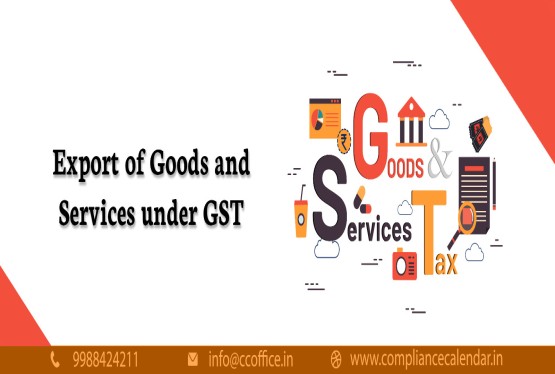













































_for_FY_2025-26_crop10_thumb.jpg)



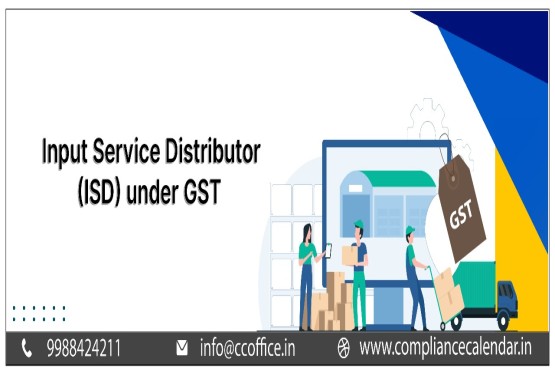








_learn_crop10_thumb.jpg)








_Filing_Due_Dates_for_FY_2024-25_learn_crop10_thumb.jpeg)
